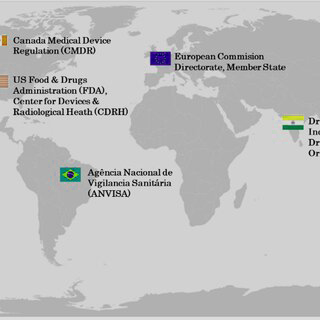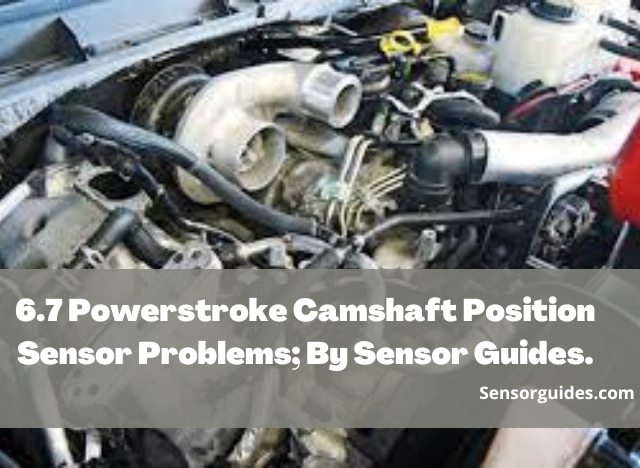“Driving into Tomorrow: Maximize Fuel Efficiency with the Game-Changing Map Sensor Technology!” – 2023
Introduction
Brief assessment of the importance of Fuel Efficiency inside the car industry
Fuel Efficiency has emerge as a paramount concern within the automotive industry, driven by way of a confluence of factors, which include environmental recognition, economic considerations, and government regulations. With the depletion of fossil fuels and the growing impact of greenhouse gas emissions, there may be an urgent need to develop vehicles that devour less gasoline and emit fewer pollution.
From a financial point of view, gasoline efficiency directly affects consumer costs. Vehicles with better fuel economic system can travel farther on an unmarried tank of gas, reducing the frequency of refueling and average gasoline prices. This translates into enormous savings for each man or woman automobile owners and industrial fleets.
Moreover, governments worldwide have applied stringent gasoline economy standards to minimize emissions and sell sustainable transportation. These guidelines mandate that automakers produce motors that meet particular gasoline performance goals, encouraging the development of revolutionary technology and design tactics to decorate fuel consumption.

Introduction to Map Sensors and their essential function in optimizing gasoline consumption – Fuel Efficiency
Map sensors, also called manifold absolute pressure (MAP) sensors, play a critical role in optimizing gas intake in modern vehicles. These sensors degree the pressure of the air within the engine’s consumption manifold, imparting treasured statistics to the engine manage unit (ECU) for determining the precise air-gas combination.
The air-gasoline aggregate is a critical thing in combustion efficiency. A lean air-fuel combination, with a better percentage of air to gasoline, results in greater entire combustion and advanced gasoline financial system. However, an excessively lean aggregate can cause engine misfires and performance issues. Conversely, a rich air-gasoline combination, with extra gasoline than air, gives more strength however reduces gas efficiency.
By appropriately measuring the intake manifold stress, Map sensors enable the ECU to precisely calculate the air density, which is essential for figuring out an appropriate quantity of gasoline to inject. This ensures that the engine operates on the most useful air-fuel ratio, maximizing both power and fuel performance.
In addition to optimizing gas intake, Map sensors also contribute to engine smoothness, emissions control, and general car overall performance. They offer real-time comments to the ECU, permitting it to make adjustments to fuel injection and ignition timing as wished. This guarantees that the engine operates successfully and efficiently below numerous driving situations.

Understanding Map Sensors
Definition and cause of Map Sensors
Map sensors, additionally known as manifold absolute pressure (MAP) sensors, are crucial components in present day internal combustion engines. They are digital devices that degree absolutely the pressure of the air inside the engine’s intake manifold. This data is crucial for the engine control unit (ECU) to determine the most pleasing air-gasoline aggregate for green combustion.
The primary purpose of Map sensors is to ensure that the engine operates at the precise air-fuel ratio, which is commonly among 14.7:1 and 15:1. This ratio represents the stoichiometric element, wherein the quantity of fuel is really enough to completely burn all of the available oxygen within the air. Achieving this balance is critical for maximizing fuel monetary gadget and minimizing emissions.
By appropriately measuring the consumption manifold stress, Map sensors offer the ECU with crucial data on the air density coming into the engine. Air density, in turn, is prompted thru elements which includes engine load, altitude, and air temperature. Map sensors continuously show those changes and relay the facts to the ECU, permitting dynamic modifications to the fuel injection system.
How Map Sensors feature in tracking and adjusting engine overall performance
Map sensors normally employ a piezoelectric or piezoresistive sensing element. Piezoelectric sensors generate a voltage proportional to the executed pressure, even as piezoresistive sensors alter their electric resistance in response to stress changes. The sensor’s output sign is then transformed into a digital price and transmitted to the ECU.
The ECU translates the Map sensor statistics collectively with different inputs, along with engine temperature, throttle function, and crankshaft function, to decide the proper fuel injection amount. This complicated calculation takes under consideration the engine’s strolling situations, ensuring that the correct quantity of gas is injected to keep the stoichiometric air-fuel ratio.
In addition to Fuel Efficiency, Map sensor information additionally influences ignition timing adjustments. By tracking consumption manifold strain, the ECU can determine the appropriate timing for the spark plugs to ignite the air-gasoline combination. Proper ignition timing optimizes combustion efficiency, leading to smoother engine operation and decreased emissions.
The connection among Map Sensors and Fuel Efficiency
Map sensors play a right away and vital role in improving gas overall performance by making sure that the engine operates on the maximum excellent air-fuel ratio. By effectively measuring consumption manifold pressure and supplying real-time comments to the ECU, Map sensors allow precise gas injection and ignition timing adjustments, maximizing combustion overall performance and minimizing fuel consumption.
The impact of Map sensors on gasoline performance is specially big beneath various the usage of conditions. During low-load conditions, which include cruising or idling, Map sensors assist maintain a lean air-gas mixture, reducing gas intake without compromising performance. Conversely, below excessive-load situations, such as acceleration or mountaineering hills, Map sensors make sure that the engine receives a richer aggregate for best strength shipping.
Overall, Map sensors are vital components in modern-day engine control systems, contributing drastically to superior gas overall performance, reduced emissions, and greater car universal performance. Their capability to correctly screen consumption manifold strain and offer actual-time comments to the ECU makes them vital for reaching foremost engine operation below various using conditions.
The Technological Landscape – Fuel Efficiency
Evolution of Map Sensor generation
Map sensor generation has exceeded thru vast improvements because of the fact that its inception, driven via the relentless pursuit of superior gas performance and engine performance. The evolution of Map sensors may be substantially categorized into 3 distinct stages:
- Early Mechanical Sensors: The preliminary Map sensors have been mechanical gadgets, counting on diaphragms or bellows to come across adjustments in intake manifold stress. These sensors were exceptionally smooth but suffered from accuracy limitations and susceptibility to wear and tear.
- Discrete Electronic Sensors: In the Seventies, electronic Map sensors emerged, utilising semiconductor technology to degree pressure greater precisely. These sensors hired piezoresistive or piezoelectric sensing factors, offering advanced accuracy and reliability over their mechanical opposite numbers.
- Integrated Circuit (IC) Sensors: The introduction of microelectromechanical systems (MEMS) generation inside the 1980s revolutionized Map sensor layout. MEMS sensors combine mechanical and virtual additives on a single chip, ensuing in miniaturized, alternatively correct, and cost-effective sensors.
Today, IC sensors have emerge as the dominant technology for Map sensors, offering a number of benefits over preceding generations. They are smaller, lighter, extra long lasting, and capable of offering noticeably precise stress measurements over a big variety of walking situations.
Cutting-facet improvements shaping the future of Map Sensors
Research and improvement in Map sensor era preserve to push the limits of performance and capability. Several contemporary improvements are shaping the destiny of Map sensors:
- Digital Compensation Techniques: Advanced virtual algorithms are being advanced to decorate the accuracy and stability of Map sensors, compensating for elements inclusive of temperature versions and sensor growing older.
- Multi-Sensor Integration: Integrating multiple sensors, which includes temperature sensors and humidity sensors, into a unmarried Map sensor package deal provides extra complete engine statistics for the ECU, enabling even finer-tuned manipulate of engine operation.
- Wireless Connectivity: The integration of wireless communique abilities into Map sensors permits for real-time records transmission to vehicle diagnostics systems and far off tracking packages.
These improvements are paving the manner for subsequent-era Map sensors which might be more sensible, adaptable, and seamlessly included into superior engine manipulate structures.
Unveiling the Mechanics – Fuel Efficiency
Delving into the complex details of ways Map Sensors have interaction with the engine
Map sensors set up a vital link among the engine’s consumption manifold and the ECU, providing real-time statistics on the strain of the air entering the engine. This elaborate interaction performs a pivotal role in optimizing fuel injection, combustion, and average engine performance.
The interplay among Map sensors and the engine can be summarized in the following steps:
- Pressure Sensing: The Map sensor constantly monitors the strain of the air in the intake manifold. As the engine operates under diverse situations, the consumption manifold pressure fluctuates, reflecting modifications in engine load and air density.
- Signal Conversion: The Map sensor converts the strain size into an electrical signal, generally a voltage or a resistance fee. This sign is proportional to the measured strain, presenting a quantitative illustration of the air density.
- Data Transmission: The electric powered sign from the Map sensor is transmitted to the ECU, the engine’s “thoughts.”
Analyzing the impact of Map Sensor information on Fuel Efficiency and combustion
The facts received from the Map sensor thru the ECU plays a essential function in optimizing gasoline injection and combustion, ensuring green engine operation and maximizing gasoline financial machine.
Fuel Injection Optimization:
The ECU uses the Map sensor records to determine the fine quantity of gasoline to inject into every cylinder. By expertise the air density, the ECU can calculate the stoichiometric air-fuel ratio, the exceptional stability amongst air and gasoline for whole combustion.
Under low-load situations, which encompass idling or cruising, the Map sensor indicators a decrease intake manifold stress, indicating a decrease air density. The ECU responds through adjusting the gas injectors to deliver a leaner air-fuel mixture, decreasing fuel intake without compromising performance. Conversely, underneath excessive-load conditions, consisting of acceleration or mountaineering hills, the Map sensor detects a better consumption manifold pressure, indicating multiplied air density. The ECU for this reason enriches the air-gas combination, supplying more gas for most excellent strength transport.
Combustion Enhancement:
The Map sensor information additionally influences ignition timing modifications, some other important element for green combustion. By tracking intake manifold pressure, the ECU determines the right timing for the spark plugs to ignite the air-fuel aggregate.
Proper ignition timing ensures that the combustion system occurs at the most appropriate second, maximizing power launch and minimizing unburned hydrocarbons. This leads to smoother engine operation, reduced emissions, and stepped forward gasoline economy.
Conclusion
Map sensors have emerged as crucial additives in modern engine manipulate systems, playing a vital position in optimizing gas efficiency, decreasing emissions, and improving normal vehicle overall performance. Their capacity to as it should be screen consumption manifold pressure and offer actual-time feedback to the ECU permits precise adjustments to Fuel Efficiency and ignition timing, ensuring green combustion beneath numerous driving situations. The evolution of Map sensor technology from easy mechanical gadgets to state-of-the-art integrated circuit sensors has notably stepped forward their accuracy, reliability, and price-effectiveness. Cutting-aspect improvements, along with digital repayment techniques, multi-sensor integration, and wi-fi connectivity, are in addition expanding the abilities of Map sensors and paving the manner for next-technology engine manipulate systems.
FAQs
What are the number one advantages of using Map sensors in vehicles?
Map sensors provide a variety of blessings, such as:
- Improved Fuel Efficiency
- Reduced emissions
- Enhanced engine performance
- Smoother engine operation
- Extended engine life
How do Map sensors make a contribution to gasoline economic system upgrades?
Map sensors allow precise gasoline injection and ignition timing modifications, making sure that the engine operates on the most beneficial air-gas ratio. This results in greater whole combustion, minimizing gasoline intake with out compromising overall performance.
What precise emissions do Map sensors assist lessen?
Map sensors make contributions to lowering numerous emissions, consisting of:
- Nitrogen oxides (NOx)
- Unburned hydrocarbons (HC)
- Carbon monoxide (CO)
Are Map sensors utilized in all kinds of automobiles?
Map sensors are broadly utilized in gas-powered and diesel-powered vehicles, which includes passenger motors, vehicles, SUVs, and buses.





